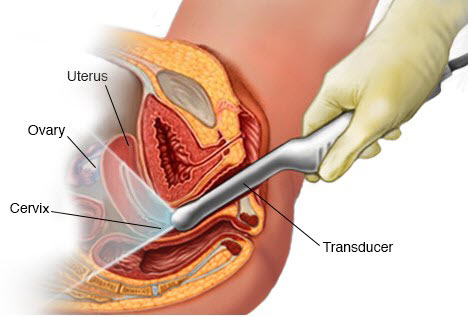Ultrasound tests are a great way of taking images of your internal organs. It involves passing high-frequency sound waves through your body to take images. These sound waves will make contact to your organs and bounce back to create images of their structures. Your doctor may order a transvaginal ultrasound to find out more about your reproductive organs like ovaries, uterus, vagina, and cervix. As it is conducted through the vagina, it is given the name "transvaginal" ultrasound. Your doctor makes use of an ultrasound wand vaginally, which is what separates it from other types of ultrasound tests that involve using the wand on the outside of your pelvis area.

What Is a Transvaginal Ultrasound?
As mentioned already, the procedure involves inserting an ultrasound wand into your vagina, which is what makes it different from typical ultrasound tests. Transvaginal ultrasound gives important information about your pregnancy, and is extremely helpful in early pregnancy. Your doctor may order an ultrasound early in your pregnancy to determine a more accurate due date, determine the cause of any bleeding, and assess the uterine lining. They may also be able to check for ectopic pregnancy and find any ovarian cysts that may be present. The procedure is quite simple and is not painful, but some women may find it a bit embarrassing.
How to Prepare for the Scan
If you are experiencing any pain in your reproductive organs or in your abdominal region, your doctor may order a transvaginal ultrasound to identify the root cause of trouble. You do not usually need to prepare a lot before the scan. Your radiologist or ultrasound assistant will also provide information about this before the procedure. Here is a bit more about transvaginal ultrasound:
- There is no need for a full bladder to conduct this procedure; in fact, you will have to empty your bladder completely before you proceed with the scan.
- You will have to remove the tampon if you are using one.
A vaginal ultrasound scan is not for you if you are not sexually active or are a virgin.
Your doctor should not order a vaginal ultrasound if you cannot tolerate internal examinations.
It is worth pointing out that you should not stop taking your medication before going for the scan. It is possible to perform the procedure any time during your period, during your pregnancy, or even after the menopause.
How Is Transvaginal Ultrasound Performed?
You will not feel any pain during the procedure because sound waves will not cause any discomfort. Here is how your radiologist will perform the procedure:
- You will have to lie down on an exam table with knees bent and feet held in stirrups.
- Your doctor will give you a probe covered with a condom and gel that you need to place into your vagina.
- The probe, also called a transducer, will send out high-frequency sound waves that will come back after hitting different body structures. A computer will receive and convert these reflections into images that can be seen on a TV monitor.
- Your healthcare provider will also move the probe around to take images of other pelvic organs.
In some cases, the typical ultrasound method may not take clear images. That is when your doctor may decide to use a different type of ultrasound method known as saline infusion sonography (SIS).
How Long Does It Take?
The procedure may take about 15 minutes. It may take longer if it is difficult to take clear images. Similarly, it will take more time if your doctor needs to do other investigations as well. You may also experience delays due to some unforeseen circumstances.
Here's a great video to help you learn more about transvaginal ultrasound:
After Transvaginal Ultrasound
While the procedure is quite simple and is not painful at all, you may still need to learn more about what you should expect after the procedure.
Your radiologist will remove the ultrasound wand from your vagina and remove any conductive gel that may be there on your skin. You can urinate right after the exam and continue with your normal activities.
There are no associated risks because ultrasound involves no exposure to radiation – it only uses sound waves that are painless.
After the test, your radiologist will review the images and look for any signs of abnormality. If it is possible to make a diagnosis, they will suggest a treatment option. Your doctor may order other diagnostic tests if your ultrasound fails to give enough evidence to make a definitive diagnosis. Sonohysterogram is a common test used specifically to further evaluate any abnormal findings in your transvaginal ultrasound.
